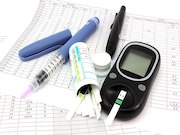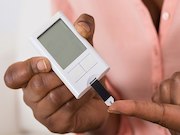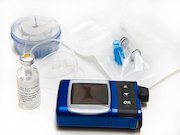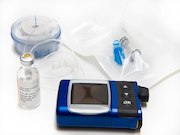Tag: Diabetes: Type II
Sulfonylureas As 2nd-Line T2DM Therapy Tied to Higher Event Risk
Associated with increased risk of myocardial infarction, all-cause mortality, severe hypoglycemia
Intermittent Energy Restriction Effectively Cuts HbA1c in T2DM
Intermittent energy restriction equivalent to continuous energy restriction for reducing HbA1c
Empagliflozin Doesn’t Up Risk of Bone Fractures
Per pooled data from placebo-controlled trials and data from a head-to-head study with glimepiride
Characteristics of Severe Hypoglycemia Identified in T2DM
Increased odds of severe hypoglycemia with history of non-severe hypoglycemia, HbA1c <6 percent
Basal Insulin Analogues Similar for Glucose Lowering
Slight differences in risk for nocturnal hypoglycemia or weight gain exist
Evidence of Clinical Inertia in Management of T2DM
No treatment intensification for many patients with HbA1c threshold expected to trigger intensification
Two Regimens Fail to Stop Declines in β-Cell Function
Metformin alone or after insulin no help in youth with new diabetes, impaired glucose tolerance
Basal Insulin Analogs Don’t Cut Hypoglycemia-Linked ER Visits
No reduced risk of hypoglycemia-linked ER visits, admissions for basal insulin analog vs. NPH insulin
Obesity Paradox Seen in T2DM Modified by Smoking Status
Obesity paradox was pronounced in current smokers, and absent in never smokers
Travel Costs Are Considerable Part of T2DM Follow-Up Costs
Implementing self-monitoring for half of follow-up would reduce average annual HbA1c screening costs














